Amazon re:Invent Highlights, Google’s answer to AWS, and Reimagining Smart Cities
Amazon re:Invent Highlights, Google’s answer to AWS, and Reimagining Smart Cities
- Last Updated: December 2, 2024
Yitaek Hwang
- Last Updated: December 2, 2024



Amazon re:Invent IoT Highlights
Amazon’s re:Invent conference concluded on Friday, and as expected, there were big updates to the AWS portfolio of services. In case you missed it, here’s a summary of all the major announcements that affect the IoT world:
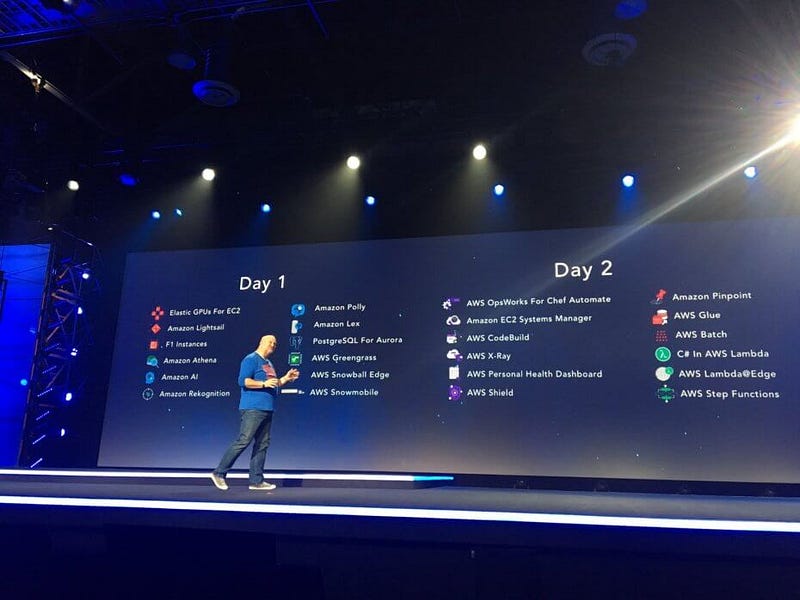
Image Credit: AWS re:Invent Twitter
Computing: T2 (burstable), R4 (memory intensive), I3 (high I/O), C5 (compute intensive), and F1 (FPGA accessible) instances were released. Other new additions include elastic GPUs (ability to attach graphics acceleration with flexibility) and instances for programmable hardware, which means further support for IoT and AI products.
- Elastic GPUs: AWS’s previous GPU-based instances include G2 for graphics-intensive applications and P2 for general-purpose GPU applications. Elastic GPUs provide more flexibility: think of it as GPU version of the EC2.
- F1: Continuing with the theme of more flexibility, F1 instances now allow programmers to package hardware-description languages as an image and run it as custom logic on FPGAs to shorten deployment cycle time. You can now sell your Verilog/VHDL programs on AWS Marketplace.
- Lightsail: Amazon’s solution to DigitalOcean’s cheap VPS management services. Provision a virtual private server at $5 per month.
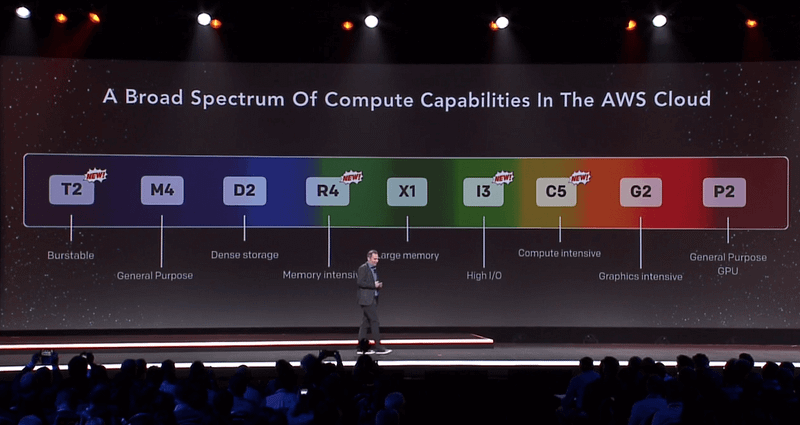
Image Credit: Venture Beat
Artificial Intelligence: Amazon is quickly catching up to IBM Watson and Microsoft Azure’s deep learning services: Lex, Rekognition, and Polly make up AWS’s NLP, image recognition, and text-to-speech services.
- Lex: The technology behind the Alexa is now available for developers. The infrastructure isn’t much different if you have already built skills for the Echo. But the introduction of Lex means proliferation of chatbots and better notifications through voice.
- Rekognition: Computer vision sector has been dominated by Google and Facebook as they have automatically tagged millions of user photos. Amazon might be late to the game, but Rekognition now provides an AWS solution if your infrastructure depends entirely on AWS.
- Polly: Polly is Amazon’s text-to-speech service, which will supplement Lex and other voice-driven interfaces. As more tech giants move to take control of the voice-interface sector (Google Home, Samsung buying Viv, Apple’s next generation Siri), it’ll be interesting to see whether or not Amazon will cement its lead that it gained with Alexa and the Echo.
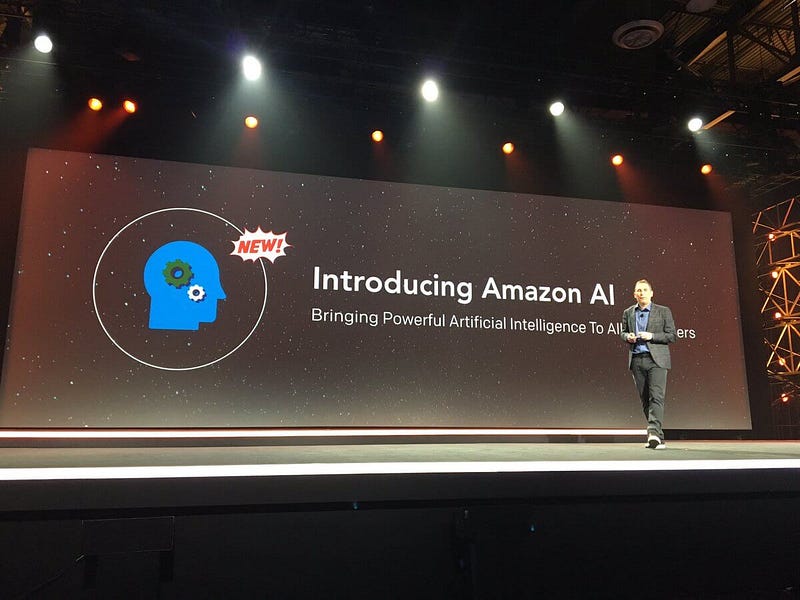
Image Credit: Amazon re:Invent Twitter
Security: The Mirai attack awakened the world to the importance of security in IoT devices. AWS Shield is Amazon’s solution to mitigate security issues, specifically pertaining to DDoS attacks. It’s free, and covers 96% of most common attacks.
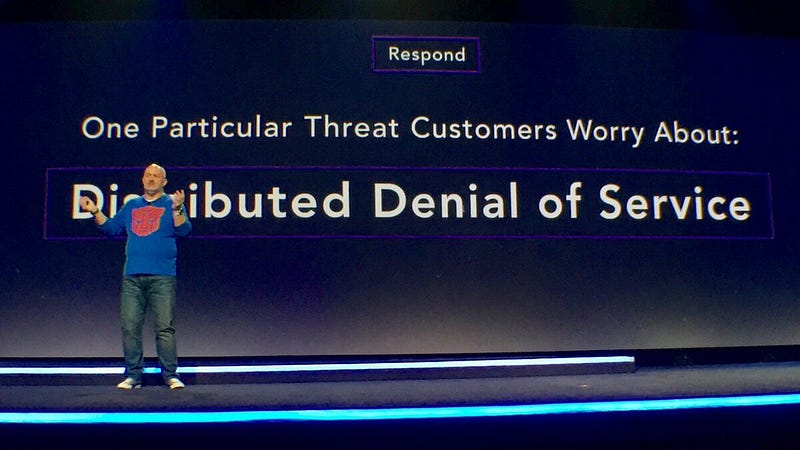
Image Credit: Amazon re:Invent Twitter
Mobile: Amazon Pinpoint isn’t directly related to IoT per se. It’s more of a marketing tool as it allows developers to send targeted push notifications based on other metadata. But I see applications with VR/AR products that enable targeted user engagement, improving user experience, and ultimately building out better IoT services.
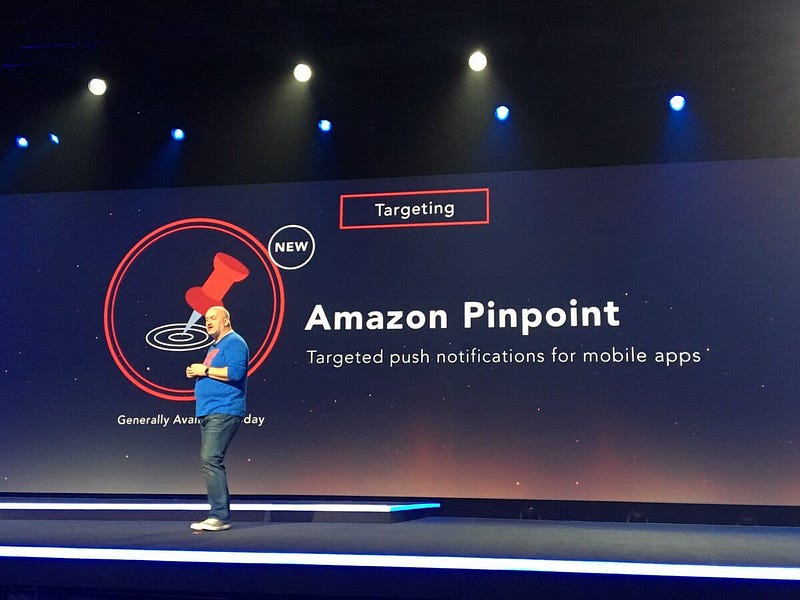
Image Credit: Amazon re:Invent Twitter
Hybrid: AWS Greengrass and Lambda@Edge bring AWS capabilities to Edge and Fog computing. The benefits and limitations of Cloud Computing were discussed by Calum McClelland in his #askIoT post. AWS is now letting developers decide which route to take.
- Greengrass: Embed Lambda functions in connected devices. Greengrass enabled IoT devices to respond quickly to local events, allowing it to operate offline and reduce connectivity costs.
- Lambda@Edge: As the name suggests, AWS is now providing Lambda processing models at more edge locations. The preview version allows developers to write lightweight logic through Amazon CloudFront.
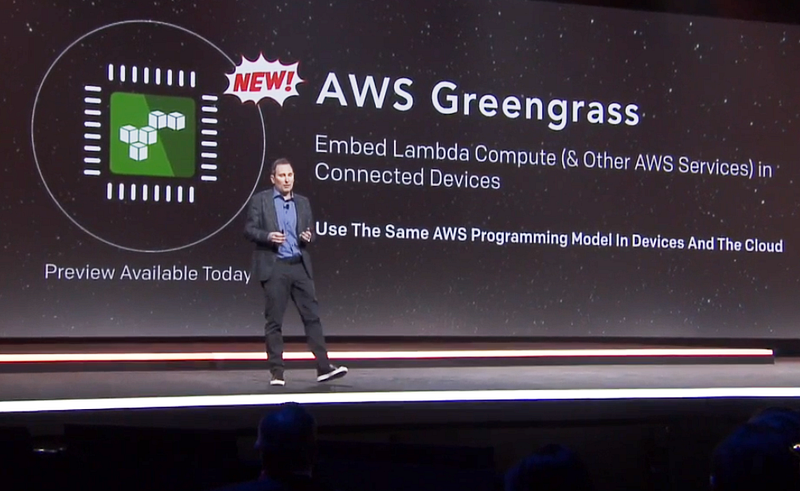
Image Credit: Amazon re:Invent Twitter
Takeaway:
Amazon re:Invent reassured to us that IoT is here to stay. The tech giants are providing more support and infrastructure for IoT products and services to succeed. The flurry of AI and GPU instance releases also reaffirm the continuing trend in 2016.
How Alphabet is Challenging AWS
If you read through this far, you now know a whole lot about AWS and their new services. But AWS has some serious competition as Ben Thompson discussed in detail earlier on his blog the stratechery. It’s a fascinating read, and an important thing to consider if you are planning on choosing between Amazon or Google’s cloud computing, AI, and/or IoT offerings. We summarized Ben’s analysis on how Google is trying to dethrone AWS in the future.
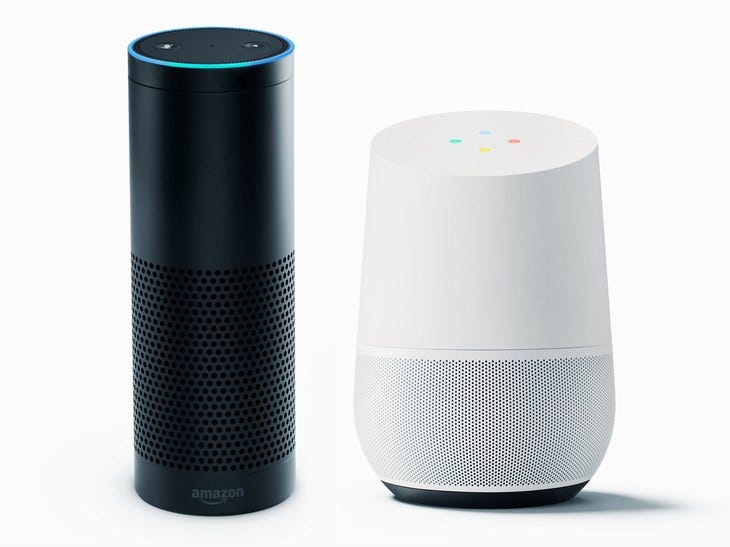
Image Credit: Wired
Summary:
- AWS’s success rests on Amazon’s pure platform approach. As mentioned above, developers have access to flexible tools to build a custom product or solution at a reasonable price. Google, on the other hand, is a product company. Google App Engine comes with pre-configured solutions and integrated products unlike AWS’s components.
- While AWS is aspiring to make an ecosystem similar to what Microsoft did with Windows for enterprise software, Google is taking what Ben calls the “browser approach” to build on top of other ecosystems. For example, Google’s Kubernetes (portable container cluster manager) is platform agnostic: it runs on AWS, Azure, or Google Cloud Engine, making the underlying infrastructure irrelevant.
- Ben argues that Kubernetes was Google’s attempt to change the playing field. Just as the platform-agnostic browsers pushed an environment for best search engine to win, Google betting that best customer experience based on vendor-agnostic containers will shift the competition from platforms to products.
Takeaway:
The market is realizing that IoT isn’t about “things.” The value is in the service, not the device as James Schaefer discussed in length in his Medium post. Perhaps Google’s bet on changing the rules of the competition to best products follows this logic. People can care less about the platform, if they are reaping the benefits of a good IoT service. Google arguably owns the most data and has the best machine learning tools. While Amazon still holds the lead in cloud computing, don’t be surprised if Google surpasses Amazon in the near future.
Quote of the Week
“Technology has failed to solve many real-world urban challenges, and policy has failed to capitalize on the full potential of digital innovation. Cross-cutting problems require integrated solutions, ideally at the scale of actual communities. And yet there isn’t a single city today that can stand as a model for our urban future.
Whatever we do, we know the world doesn’t need another plan that falls into the same trap as previous ones: treating the city as a high-tech island rather than a place that reflects the personality of its local population. With this holistic vision in mind, our labs will continue to stress-test our hypotheses about the role of technology in cities. There are no magical fixes to tough urban problems. Anything we try will require lots of discussion, refinement, and adaptation. Responsible innovation at the city scale requires self-reflection and a willingness to make adjustments based on local feedback.”
– “Reimagining cities from the internet up” by Daniel L. Doctoroff
A year ago, Larry Page and Daniel Doctoroff started Sidewalk Labs to reimagine future cities: one where “ubiquitous connectivity, social networks, sensing, machine learning and artificial intelligence, and new design and fabrication technologies” will bring new urban innovations. This week, Daniel detailed his findings in a Medium post, admitting that there remains many questions to be resolved.
Daniel’s view of connected cities are more optimistic than the dangers of smart cities discussed by Calum McClelland in his post last month. Security and privacy concerns aside, Sidewalk Labs plans to build several labs to prototype and study how future cities would look like:
- Build Lab: address housing affordability through innovative construction and design methods.
- Care Lab: brings healthcare to low-income groups through integrated healthcare delivery and prevention.
- Manage Lab: improves efficiency of municipal processes through better data analysis.
- Model Lab: explores modeling tools to address sustainability and transportation needs.
Sidewalk Labs is making a tangible effort to prepare for fundamental changes that IoT will bring to urban life. And as he mentions in his post, the direction of the future relies on the integration and collaboration of governments, tech companies, and most importantly communities of people who will live in these cities.
The Rundown
- Learn React Native with interactive examples — ReactNativeExpress
- Elastic NBA Rankings — klarsen1
- Building Financial Models with Pandas — PBPython
- Python Data Science Handbook — jakevdp
- Learn SQL online — Hacker Lists
- Jupyter Notebook Tutorial — datacamp
- Learning to Read x86 — Pat Shaughnessy
Resources
- colorcet: A set of useful perceptually uniform colormaps for plotting
- AnyBar: OS X menubar status indicator
- Statistics Cookbook: A succinct representation of various topics in probability theory and statistics
- ebo-box: AI + Gifting = smart gifting
- LogoJoy: AI-powered logo creator
- Oben: Create your virtual self in VR
The Most Comprehensive IoT Newsletter for Enterprises
Showcasing the highest-quality content, resources, news, and insights from the world of the Internet of Things. Subscribe to remain informed and up-to-date.
New Podcast Episode

What is Hybrid Connectivity for IoT?
Related Articles





